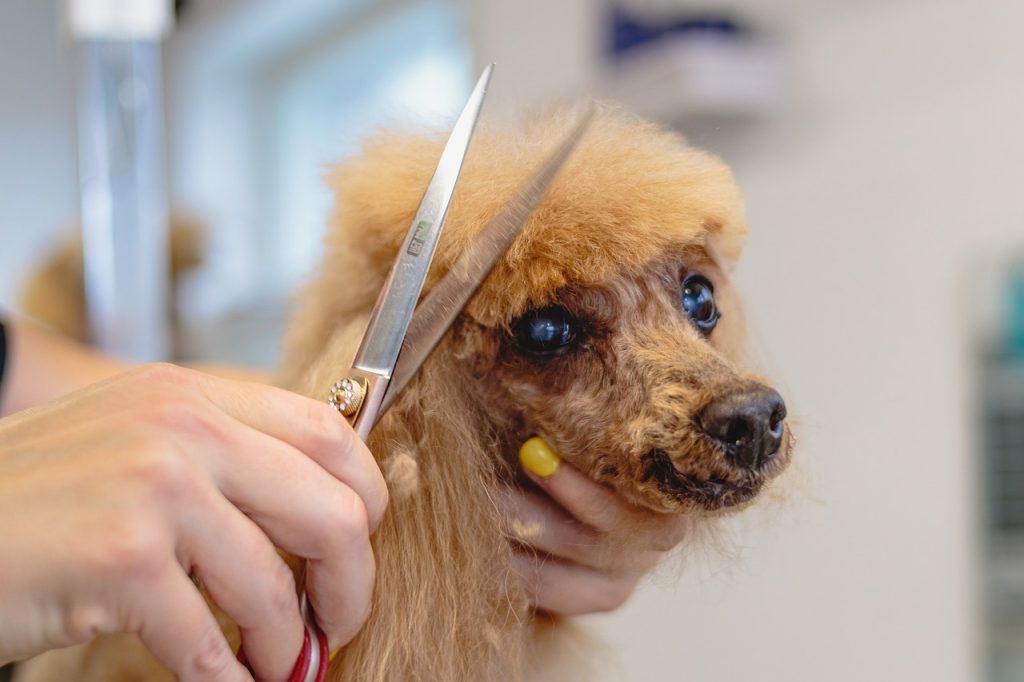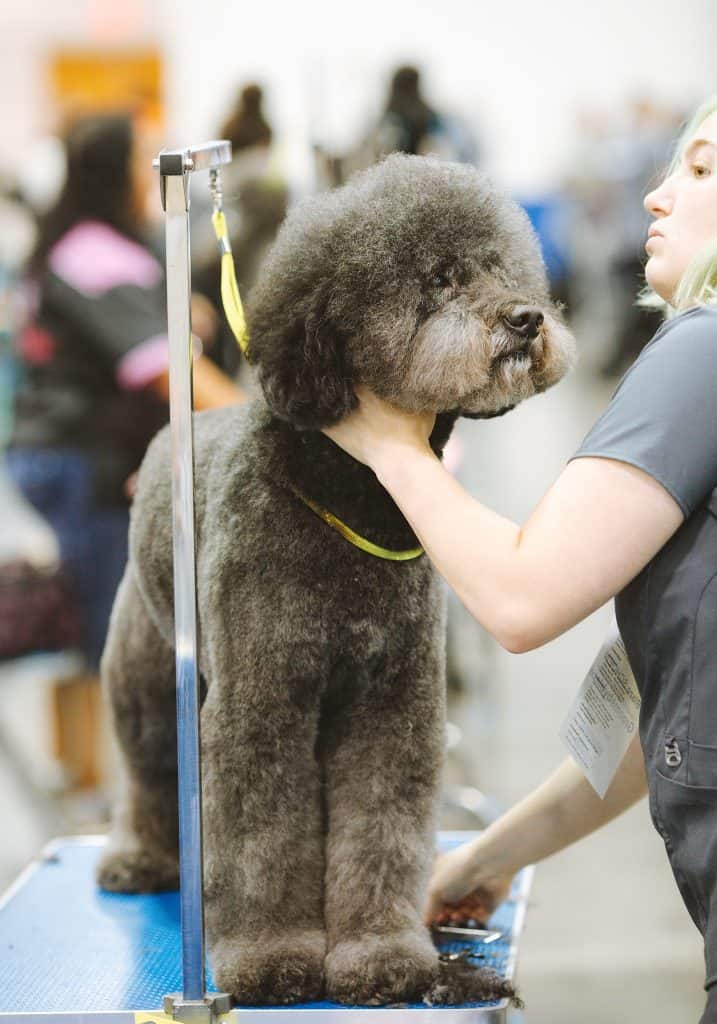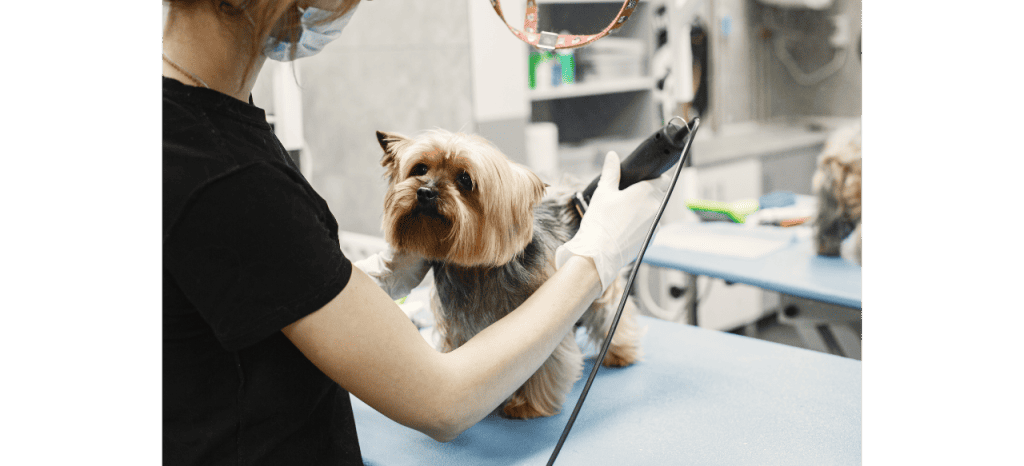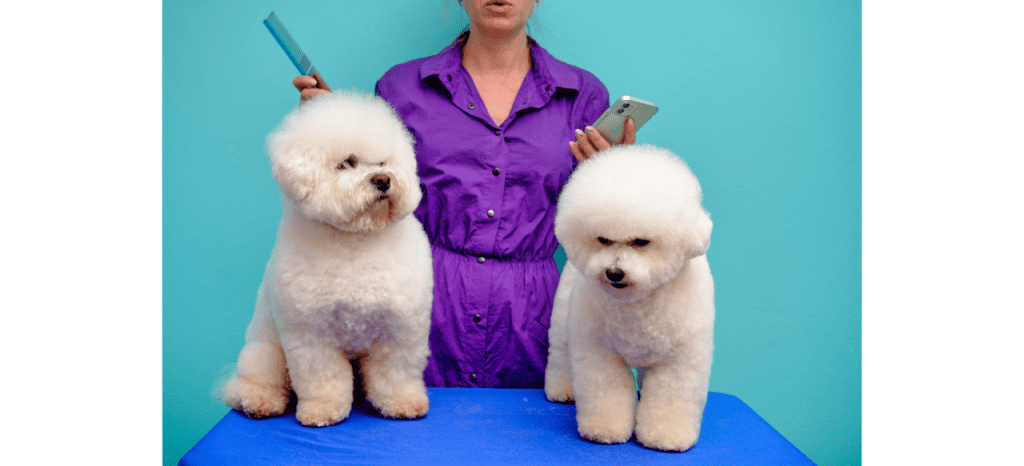Puppies are like balls of fluff and cuteness, and their fur grows faster than you can say “sit.” While it’s tempting to keep your furball looking extra adorable, it’s essential to consider the right time for their first haircut. In this entertaining list, we’ll guide you through the furry decision-making process and help you determine when your pup is ready for a stylish makeover!
When should Puppies get their first haircut?
Age Matters
When it comes to our beloved puppies, it’s essential to remember that they are not so different from human babies. Like human infants, puppies require time, patience, and care as they grow into healthy, happy adults. Their initial stages of life are crucial for establishing a solid foundation for their overall well-being. One key aspect of their development that often sparks curiosity among puppy parents is the timing of their first haircut.
So, why must you wait until your pup is four to six months old before scheduling their inaugural grooming session? The analogy to human babies sheds some light on this matter. Just as we wouldn’t subject an infant to specific activities or treatments until they reach a particular developmental stage, we should approach our puppies with a similar mindset.
Here’s a more in-depth look at why this waiting period is so crucial for your furry friend:
- Maturity of Their Coat: When puppies are born, their fur is typically soft, delicate, and, in many cases, quite fluffy. Over the first few months of their life, their coat undergoes significant changes. It becomes thicker, more resilient, and acquires its adult texture and characteristics. Waiting until your pup is four to six months old allows its coat to mature fully. This is especially important for long-haired or double-coated breeds.
- Comfort and Tolerance: Puppies, like human infants, are often more sensitive during their early stages of development. Their skin may be more delicate, and they may be more prone to discomfort. Subjecting a very young puppy to the unfamiliar sensations and sounds of a grooming session can be overwhelming. Waiting until they are a bit older ensures that they can handle the grooming process with more ease and confidence.
- Socialization: In the first few months of their life, puppies are primarily focused on adapting to their new world and building bonds with their human companions. Socialization and trust-building are vital components of their early development. Rushing into a grooming session too early can be counterproductive to this process, as it may introduce stress or anxiety related to grooming. Waiting until they are older allows for a more positive grooming experience.
- Health and Safety: Young puppies may still need to complete their vaccination schedules, and they are more susceptible to infections and illnesses. Bringing them to a grooming salon where they might encounter other dogs could pose health risks. Waiting until your pup is around four to six months old often means they have received their necessary vaccinations, reducing the risk of illness during grooming.

Mat Attack
Is your puppy beginning to look more like a mobile furball with eyes than an actual dog? It’s a common occurrence as puppies grow, and their fluffy coats can sometimes get out of hand. But when you start noticing that their fur has become a tangled mess of mats, it’s a sign that your little buddy might be overdue for their inaugural haircut.
These mats and tangles aren’t just a minor aesthetic issue; they can be a source of discomfort and even pain for your puppy. Think of it as if you had a tangled mess in your hair that kept pulling on your scalp – not a pleasant experience, right? Well, the same goes for your furry friend.
The formation of mats and tangles in your puppy’s fur can be attributed to various factors. Their constant exploration and play, combined with the natural shedding and regrowth of puppy fur, can make hair knotted together. These mats can become more than a minor inconvenience; they can pull on your puppy’s sensitive skin, causing discomfort.

If left unattended for a short time, these mats can lead to more severe issues. They can create a breeding ground for skin irritations, infections, and parasites. In some cases, mats may become so tightly wound that they can restrict your puppy’s movement or even lead to bald patches. So, it’s not just about maintaining your pup’s appearance – it’s about their overall health and well-being.
Overheating Alert
As the summer sun blazes and temperatures soar, it’s not just us humans who feel the heat. Our four-legged friends, especially puppies, can struggle to cope with the rising mercury. If you notice your puppy panting excessively and appearing visibly uncomfortable, their fur could be a significant factor contributing to their distress.
A puppy’s fur, while undeniably cute and fluffy, can be a double-edged sword when the heat is on. Dogs primarily regulate their body temperature through panting, and in the sweltering summer months, their thick coat can hinder this natural cooling process. The insulation that keeps them cozy in winter can become a burden when the sun beats down.
Excessive panting, along with symptoms like restlessness, lethargy, and seeking out cool spots, is your pup’s way of telling you they’re feeling the heat a bit too much. If you’ve noticed these signs, consider a haircut for your furry companion.
Trimming or thinning out your puppy’s coat is an effective solution to help them stay relaxed and comfortable during the scorching summer months. It’s like giving your pup a personalized air conditioning system. By removing excess fur, you enable better air circulation against their skin, allowing their body to dissipate heat more efficiently.
However, it’s crucial to approach this with care. While a haircut can relieve the heat, you shouldn’t go overboard. Consult a professional groomer who knows the specific needs of your puppy’s breed. They’ll be able to determine the appropriate length to trim or thin your pup’s coat without compromising their protection from the sun’s harmful UV rays.

Remember that dogs, including puppies, are susceptible to sunburn, especially those with light-colored or thin coats. So, it’s essential to find the right balance between keeping them cool and safeguarding them from the sun’s harsh rays. Sometimes, a groomer may recommend a “summer cut” that leaves enough fur to protect the skin while still providing relief from the heat.
The “Vision” Test
We all know that puppies are natural explorers. From sniffing out every nook and cranny in your home to joyfully investigating the outdoor world, their curiosity knows no bounds. But what if their fur becomes an obstacle, hindering their ability to see the exciting world around them? If your pup’s fur is covering their eyes or impairing their vision, it’s a clear sign that it’s time for a trim.
Imagine walking around with a constant curtain obstructing your vision. You’d likely bump into things, feel disoriented, and overall, not enjoy the experience of navigating your surroundings. Well, it’s similar for your puppy when their fur becomes a visual obstruction. Here’s why it’s essential to address this issue promptly:
- Safety: First and foremost, a puppy with impaired vision due to overgrown fur is at risk of accidents and injuries. They might stumble, trip, or even encounter obstacles because they can’t see clearly. This could result in minor scrapes and bruises or more severe accidents.
- Anxiety and Stress: A puppy that can’t see properly can become anxious and stressed. They may feel vulnerable and unsure about their surroundings, which can lead to behavioral issues or a general sense of unease.
- Social Interaction: Socializing is a crucial aspect of a puppy’s development. If they can’t see their human family members, other dogs, or people they encounter during walks or playdates, their social development may be hindered.
- Learning and Exploration: Puppies learn by observing and interacting with their environment. Clear vision is essential for their cognitive development. When they can’t see well, their ability to explore, learn, and adapt to new experiences may be limited.

That’s where the importance of a timely trim comes into play. Trimming the fur around your puppy’s eyes and face ensures they have a clear line of sight, unobstructed by their fur. This not only allows them to navigate their world with confidence but also contributes to their overall well-being.
However, it’s crucial to approach this grooming task with care. Precision is critical to avoiding accidental nicks or cuts around your puppy’s delicate eye area. If you need to become more experienced in pet grooming, it’s best to consult a professional groomer who can handle the task safely and effectively.
Excessive Shedding
If you’ve ever had a puppy, you’re no stranger to the delightful mess that their fur can create. It seems their fluff is magical, turning up on your furniture, clothes, and even in your morning coffee. While it’s easy to forgive their fur-covered presence because of their undeniable cuteness, excessive shedding can indicate that your pup’s coat requires some attention.
Excessive shedding is a common concern among pet owners, and it can have several underlying causes. It’s not just about keeping your home pristine; it can signal that something may be amiss with your pup’s coat or overall health. Here’s why addressing excessive shedding is essential:
- Health Check: Excessive shedding can be a symptom of an underlying health issue. It might indicate allergies, dietary problems, or skin conditions. It’s a sign that your pup’s well-being might be affected, and addressing it promptly can prevent potential health complications.
- Comfort: Shedding can be uncomfortable for your puppy. Mats and tangles can form in the loose fur, pulling on their skin and causing irritation. Regular grooming helps reduce shedding by removing loose fur, making your pup more comfortable.
- Cleanliness: Let’s face it, constantly battling fur on your clothes, furniture, and in your morning coffee can be frustrating. Regular grooming sessions can significantly reduce the loose fur your pup sheds, making your home cleaner and more pleasant.
- Bonding: Grooming is not just about aesthetics; it’s a bonding experience between you and your puppy. It’s a time for connection and trust-building. Regular grooming can strengthen the bond between you and your furry friend.

To address excessive shedding and keep your home fur-free, regular grooming is the solution. Professional groomers have the expertise and tools to manage shedding effectively. They can use techniques like de-shedding treatments and specific brushes to remove loose fur. Additionally, they can check your pup’s coat and skin for any signs of problems, ensuring their overall health is maintained.
Paw-pedicure Time
Puppy paws are undoubtedly one of the cutest things on this planet. Their softness, tiny size, and those playful little toes make everyone’s heart melt. But behind the irresistible charm of those puppy paws lies a practical aspect that often goes unnoticed—maintenance. Yes, even those adorable paws require a bit of upkeep.
One key area that needs attention is the fur around their paws. As puppies grow, the fur on their paws can become too long, and when this happens, it can create a host of problems. Trimming the fur around your puppy’s paws is not just about aesthetics but also essential for their hygiene and overall well-being.
- Dirt and Debris Trap: When the fur around your puppy’s paws gets too long, it becomes a magnet for dirt, debris, and all sorts of outdoor elements. Every step your pup takes can result in these particles getting tangled in their paw fur. This accumulation can lead to discomfort and even pain.
- Infections: When dirt and debris are trapped in the fur, it creates a warm and moist environment that’s perfect for the growth of bacteria and fungi. This increases the risk of skin infections, which can be painful for your pup and require veterinary attention.
- Pain and Discomfort: If the fur around their paws is not properly maintained, it can become matted and tangled. These mats can pull on your puppy’s sensitive skin, causing discomfort, irritation, and pain. This can affect their mobility and overall well-being.
- Hygiene: Cleanliness is crucial for your puppy’s health. When their paw fur is too long and dirty, it can lead to a buildup of odors and poor hygiene. This can be unpleasant for both your pup and those around them.

Trimming the fur around your puppy’s paws is a relatively simple grooming task that can make a significant difference in their comfort and overall health. It allows your pup to move freely without discomfort, reduces the risk of infections, and keeps them clean and hygienic.
However, it’s essential to approach this task with care. Your puppy’s paw pads are sensitive, and you must use the right tools and techniques to avoid any accidental nicks or cuts. If you need more confidence in your grooming skills, consider seeking help from a professional groomer who can expertly and safely manage this aspect of your puppy’s grooming needs.
Personalized Style
In the world of dogs, just as in the realm of fashion, there are trendsetters and style enthusiasts who know how to make a statement. If your pup struts into the dog park with the confidence of a runway model, turning heads and receiving admiring glances from fellow pet parents, you might just have a trendsetter on your hands. But is it all about flaunting their natural charm, or are they ready for a fresh, stylish makeover? Some dog owners choose to give their puppies their first haircut purely for the sake of style, and it’s a choice that can be both fun and endearing.
There’s no denying that our pets have a way of reflecting our personalities and, in some cases, our sense of style. Grooming can be a creative and artistic outlet for expressing your pup’s individuality and your own aesthetic preferences. Whether you envision a chic, well-groomed appearance that’s the envy of the dog park or a unique, head-turning look that showcases your pup’s personality, the possibilities are as vast as your imagination.

But style isn’t the only factor to consider when giving your puppy their first haircut. The key to achieving a desired style while ensuring your puppy’s comfort and well-being lies in consulting with a professional groomer. Here’s why this step is crucial:
- Expertise: Professional groomers possess knowledge, training, and experience in various grooming styles and techniques. They can guide you on how to achieve the specific look you desire while taking into account the practicality and suitability of your puppy’s breed and coat type.
- Comfort: While a stylish appearance is essential, your puppy’s comfort is paramount. A professional groomer is well-versed in making the grooming process as stress-free and comfortable as possible for your furry friend. They employ the right tools and techniques to minimize any potential discomfort.
- Breed-Specific Considerations: Different dog breeds come with their unique grooming requirements. What works for one breed may not be suitable for another. A professional groomer can provide tailored, breed-specific recommendations and ensure that your puppy’s grooming aligns with their natural characteristics.
- Safety: Grooming, especially for puppies, requires a high level of care to ensure their safety. Professional groomers have the skills to manage the grooming process safely, reducing the risk of accidents or injuries during the haircut.
In conclusion, giving your puppy their first haircut for style purposes is a delightful way to showcase their individuality and your fashion sense. It’s an opportunity to make a statement and express your love for your furry friend. However, amidst all the style considerations, it’s essential to keep your puppy’s comfort and overall well-being at the forefront of your priorities.
Professional Help
The urge to grab a pair of scissors and embark on a do-it-yourself (DIY) grooming adventure with your puppy can be tempting. After all, it seems like a fun way to bond with your furry friend and save a few bucks. However, when it comes to your puppy’s first haircut, it’s generally advisable to resist that temptation and leave the grooming to the professionals, and here’s why.
Grooming your puppy might appear straightforward, but it’s far from a simple task, especially for their first haircut. Puppies are curious, energetic, and often quite fidgety, making the process challenging for even the most patient pet parent. Attempting to trim, thin, or style your pup’s fur at home can lead to several complications.
- Inexperience: Most pet owners need more training and experience than professional groomers. Groomers know how to handle puppies and understand the nuances of different breeds and coat types. They are skilled in using the right tools and techniques, which can make a significant difference in the outcome and the overall experience for your puppy.
- Safety: Grooming, especially for puppies, involves using sharp instruments like scissors and clippers. Handling these tools without proper training can lead to accidents or injuries. You could accidentally nick your puppy’s sensitive skin or cause them distress.
- Stress-Free Experience: Professional groomers are experts at creating a calm and stress-free environment for your puppy. They know how to reassure nervous or anxious dogs, ensuring the grooming session is as pleasant as possible. Stress can be detrimental to a puppy’s first grooming experience and may lead to a lifelong aversion.
- Breed and Coat Knowledge: Groomers understand the specific grooming needs of different breeds. They can provide breed-specific recommendations and ensure your puppy’s haircut complements their natural characteristics. This knowledge is vital for creating a look that’s both stylish and suitable for your pup.

Leaving your puppy’s first haircut to the professionals is not just a matter of convenience; it’s a decision that prioritizes your puppy’s well-being and comfort. Professional groomers are equipped to handle puppies and their unique grooming requirements. They can make the process stress-free and safe, providing both you and your furry friend with peace of mind.
Breed Matters
One of the fascinating aspects of the world of dogs is the incredible diversity in breeds. Each breed comes with its unique set of characteristics, including size, temperament, and, of course, grooming requirements. Regarding puppy grooming, it’s important to remember that some breeds require more grooming than others. If your furry friend happens to belong to a breed with a continuously growing coat, such as a poodle or a Shih Tzu, you may need more frequent grooming appointments.
The reason behind this difference in grooming needs primarily relates to the characteristics of the coat. Breeds with continuously growing coats, often called “non-shedding” or “hypoallergenic” breeds, feature continuously growing fur rather than going through shedding cycles. This continuous growth means their fur can become long and thick if left unattended.
For these breeds, regular grooming appointments are crucial for several reasons:
- Preventing Mats and Tangles: Non-shedding breeds are more susceptible to matting and tangling of their fur. When their fur gets too long, it can intertwine and create these troublesome knots. Mats can be uncomfortable and even painful for your pup, and they can also lead to skin irritations.
- Maintaining Hygiene: Long fur can trap dirt, debris, and moisture. This can result in a buildup of odors and may contribute to poor hygiene for your pup. Regular grooming helps to keep their coat clean and manageable.
- Preventing Skin Issues: A tangled, unkempt coat can create the perfect environment for skin issues. The trapped moisture and lack of air circulation can lead to skin infections or irritations, which can be painful for your furry friend.
- Ensuring Style: If you have a particular style or look in mind for your non-shedding breed, such as a classic poodle cut or a Shih Tzu’s flowing coat, regular grooming is necessary to maintain that appearance.
The frequency of grooming appointments for continuously growing coat breeds can vary, but it’s not uncommon to schedule a grooming session every 4 to 6 weeks. This regular maintenance helps to keep your pup’s coat in excellent condition and ensures their overall comfort and well-being.
Suppose you need clarification on how often your specific breed requires grooming. In that case, it’s always a good idea to consult with a professional groomer who is well-versed in breed-specific grooming needs. They can guide the best grooming schedule and techniques to keep your non-shedding pup looking and feeling their best.
Conclusion
Deciding when to give your puppy their first haircut is an important decision, but it can also be fun and adorable. Keep an eye out for the signs, consider your puppy’s comfort, and don’t be afraid to consult with a professional groomer to ensure your pup gets the perfect haircut. Whether it’s for health, style, or simply because your furball is ready for a fresh look, your puppy’s first haircut can be an entertaining and enjoyable experience for both you and your furry friend!

